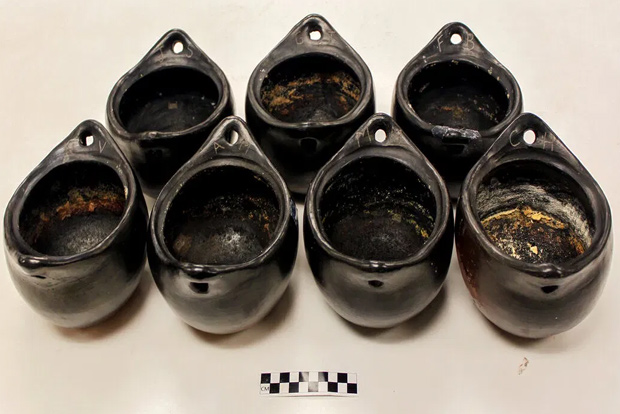Begin typing your search...
Time travel via food: Scraping through ancient pots to discover hidden history of leftovers
Sure, astrophysicists have big telescopes, and oceanographers use underwater robots, but some researchers get to cook venison, lots of it, in the name of science. Last month in the journal Scientific Reports, a team of archaeologists and organic chemists described how they had spent a year cooking a variety of meals in clay pots and then investigating the organic residues left behind.

Chennai
No one got a hearty meal out of this lab work, but the researchers found that some residues traced just the last round of ingredients, while others reflected the long-term cooking history of each pot. By documenting the results of these experiments, the team hopes to help scientists reconstruct ancient culinary practices.
Although preparing and consuming food are integral parts of the human experience, culinary traditions often get lost in the archaeological record, said Jillian A Swift, an archaeologist at the Bishop Museum in Honolulu and one of the co-authors. “We end up with these very simplified ideas of what people were eating just because it’s so hard to access that dimension.”
One way of getting at food preferences and practices over time is to look at what’s left behind after a meal. As they are used, cooking vessels naturally build up organic residues such as charred bits, thin coatings known as patinas, and absorbed fats. The sponges and dishwashers we use today tend to eradicate these leftovers, but they are often found in and on cooking implements unearthed at archaeological sites.
There’s a lot to be learned from studying these leftovers, said John P Hart, an archaeologist at the New York State Museum in Albany who was not involved in the research. “It’s a way to get a better understanding of how people lived in the past and what they ate.”
Dr Swift and her colleagues designed a culinary experiment using unglazed clay pots from central Colombia. Clay can absorb food residues and therefore provides a record of past meals, said Melanie J. Miller, an archaeologist at the University of Otago in New Zealand and another co-author. But that is the case only if the clay is unglazed, she said, adding, “When you have a glaze on a pot, it serves as a barrier.”
Seven members of the research team volunteered to cook. Each archaeologist-cook received a pot and prepared the same meal in it once a week for 50 weeks. Each then switched to a different meal for an additional one to four weeks. The preparations were based on wheat and maize. “It worked out nicely that we had representation of two foods that were really central to diets in major parts of the world but also chemically look quite different,” Dr Miller said. Venison also made an appearance in three of the meals. “We had a roadkill deer,” said Dr Miller, adding that no one ate what they had cooked. Between meals, the researchers hand-washed their pots with water. If necessary, they also used a small branch from an apple tree as an additional scrubbing tool. “We spent a long time thinking about how we could be as true to the past as we could,” Dr Swift said.
Throughout the experiment, the researchers collected samples from their pots for analysis. They gathered small chunks of charred food, scraped off bits of patina and drilled into the pots to collect absorbed fats. In laboratories at the University of California, Berkeley, and the University of Bristol in England, the team analysed the carbon and nitrogen contents of the samples.
They found that charred remains tended to reflect only the most recent ingredients cooked in a pot, which wasn’t a surprise. However, patinas had longer culinary memories, the researchers showed. While they strongly reflected the last meal, “we see these little hints of things that were cooked in the pot before,” Dr Miller said. And absorbed fats remembered the most, the team found — they tended to be overwritten the slowest. “We’re getting these three different time scales of history,” Dr Miller said.
These results could shed light on the diverse components of ancient diets, the researchers suggested. ”
Katherine Kornei is a journalist with NYT©2020
The New York Times
Visit news.dtnext.in to explore our interactive epaper!
Download the DT Next app for more exciting features!
Click here for iOS
Click here for Android
Next Story



